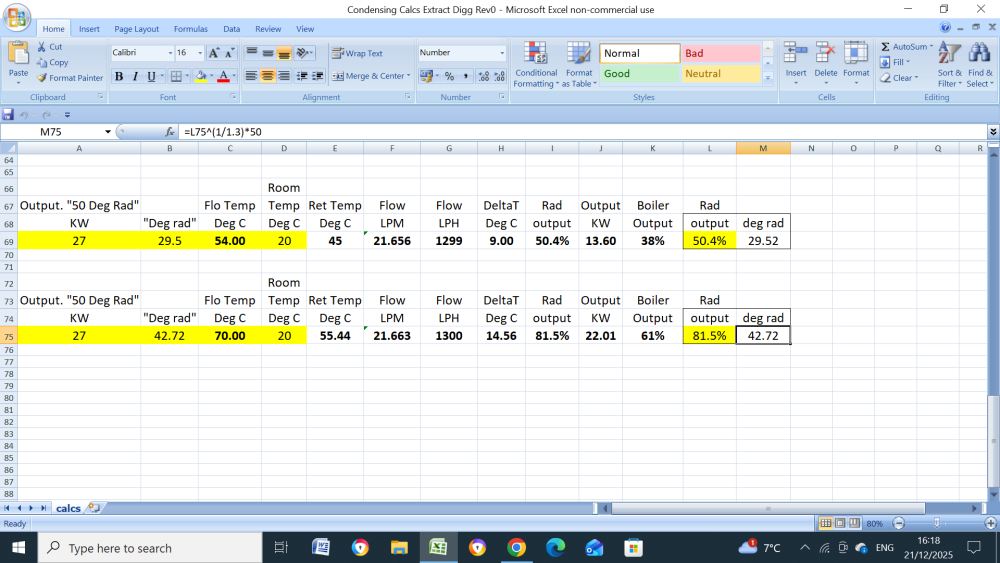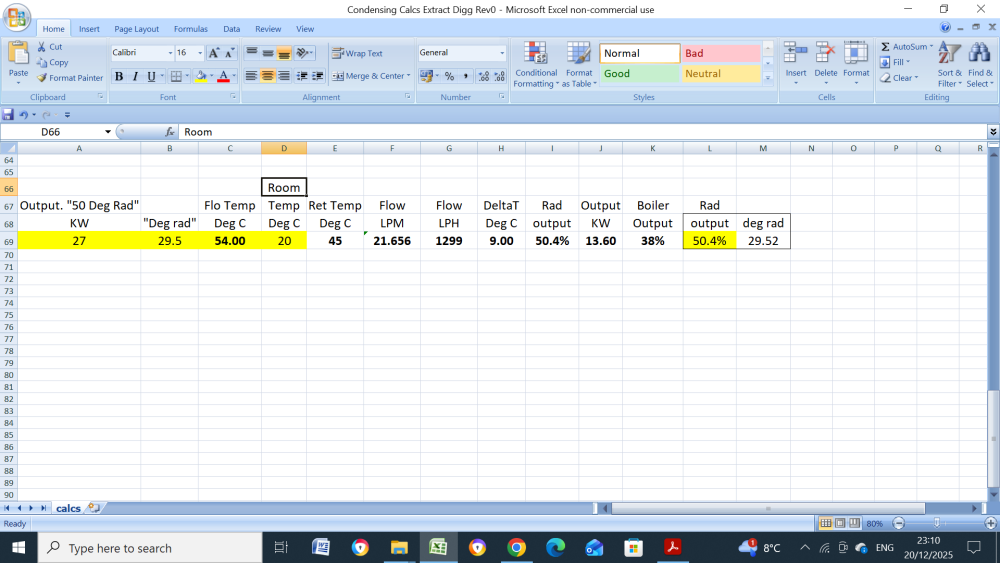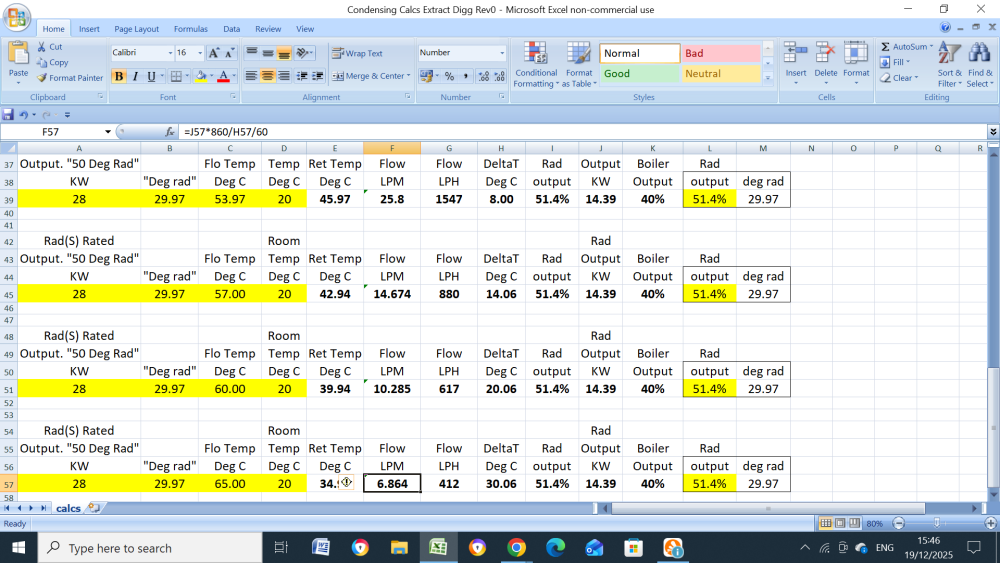
John Carroll
Members-
Posts
502 -
Joined
-
Last visited
-
Days Won
1
John Carroll last won the day on December 21
John Carroll had the most liked content!
About John Carroll
Personal Information
-
Location
Cork
Recent Profile Visitors
The recent visitors block is disabled and is not being shown to other users.
John Carroll's Achievements

Regular Member (4/5)
80
Reputation
-
Worcester Bosch Anti Fast Cycling
John Carroll replied to John Carroll's topic in Boilers & Hot Water Tanks
I think they are exactly the same as the Vaillant ones. The Set maximum burner anticycle time determines the actual anticycle time. The default setting of 20C means the maximum anticycle time is 20 minutes in the very unlikely event that the target/flow temp is 20C, if (for the same 20C setting) the target/flowtemp is 60C then the anticycle time is only 6 minutes which makes sense because the return&flow temperatures will fall quite alot with the circ pump continuing to run so gives the boiler better leeway to get away on refiring and prevent the burner to trip again at targettemp+5C, if you find 6 minutes is still insufficient then you can change the anticycle time to say 30C which gives a anticycle time of 9 minutes at a target/flow temp of 60C which might then allow the boiler to get away in one refiring, and so on, clever enough if using outside temperature compensation or the like. Vaillant were/are? notorious for maintaing ignition conditions for 60 seconds or so after refiring before allowing modulation from ~ 65% firing, most boilers will allow modulation after 10 secs or less after flame detection or whatever. Do Vaillant own Glowworm?? Vaillant anticycle times -
Worcester Bosch Greenstar 8000 System Boiler Issues
John Carroll replied to EinTopaz's topic in Boilers & Hot Water Tanks
I suppose so, you can play around with it. It would be interesting to see what the pump modulation goes to and the other data if you remove the minimum clamp. Did the engineer renew anything else apart from the HEX?, you mentioned that he might renew some control card or other??. -
Worcester Bosch Greenstar 8000 System Boiler Issues
John Carroll replied to EinTopaz's topic in Boilers & Hot Water Tanks
Readings boiler / flow target 65 boiler / flow actual 66.5 return actual 52.3 burner output 54% pump output 87% Strange, but the flowrate has hardly changed from with the old HEX flowrate. -
Worcester Bosch Greenstar 8000 System Boiler Issues
John Carroll replied to EinTopaz's topic in Boilers & Hot Water Tanks
Can you just post a set of readings as is, now. Seems mighty strange that its still firing at 100% = 36kW, return temp will tell alot IMO. -
Worcester Bosch Greenstar 8000 System Boiler Issues
John Carroll replied to EinTopaz's topic in Boilers & Hot Water Tanks
Great news. Amazed though that there was such a difference with the boiler still outputting 13.6kW and apparently over 20LPM flow. You might post a set of readings including boiler modulation/output when steady conditions achieved. -
Worcester Bosch Greenstar 8000 System Boiler Issues
John Carroll replied to EinTopaz's topic in Boilers & Hot Water Tanks
The filling loop can't be the problem even of left open full, it would just lift the boiler relief valve, your flowrate of 21.7LPM while not earthshaking at that high pump head is quite adequate, so suggest wait to see what the engineer comes up with tomorrow, it should be quite interesting. -
Worcester Bosch Greenstar 8000 System Boiler Issues
John Carroll replied to EinTopaz's topic in Boilers & Hot Water Tanks
A conventional by pass mixes HW with the return water and you would be none the wiser except that the boiler had a return temperature display which would then read and be higher than your return measured temperature, it would not affect the flow temperature whereever its measured. -
Worcester Bosch Greenstar 8000 System Boiler Issues
John Carroll replied to EinTopaz's topic in Boilers & Hot Water Tanks
Just thinking thermodynamically............. We know that your measurements of 54C/45C are correct, I would also be quietly confident that my calulated flowrate of 21.7LPM (based on your data) is correct), if we accept that the actual flow temperature leaving the HEX IS say 70C then there is only one thermodynamic explanation for your measured flowtemp of 54C and that is that there is massive bypassing going on internally for one reason or another where some of return water at 45C is mixing with the water at 70C leaving the HEX. By calculation, this means that 21.7LPM return water at 45C is entering the boiler, 13.9LPM (at 45C) is bypassing the HEX, the remaining 7.8LPM at 45C is entering the HEX and leaving at 70C to mix with the bypassing 13.9LPM at 45C to give 21.7LPM at 54C exiting the boiler. (13.9*45)+(7.8*70)=(21.7*54). Far fetched?? I wonder. -
Worcester Bosch Greenstar 8000 System Boiler Issues
John Carroll replied to EinTopaz's topic in Boilers & Hot Water Tanks
Rad dT is a moveable feast if the flowrate remains constant like it does on quite a lot of boilers. In the above (subject boiler) a 54C flow temprature results in a boiler output of 13.6kW with dT of 9C, if that flow temperature was increased to say 70C either manually or by outside temperature compensation, the boiler output will increase to 22kW but the dT will also increase, to 14.6C, for the same flowrate of 21.7LPM. -
Worcester Bosch Greenstar 8000 System Boiler Issues
John Carroll replied to EinTopaz's topic in Boilers & Hot Water Tanks
Of course they will equalise, the $64,000 question is why is there is such a difference in temperature between the alleged flow target temperature and a measurement on the flow pipe a foot or two away from it, hopefully, all will be revealed tomorrow. -
Worcester Bosch Greenstar 8000 System Boiler Issues
John Carroll replied to EinTopaz's topic in Boilers & Hot Water Tanks
One very important bit of data...what was/is the boiler output % with the above 54C/45C?? My calcs show 38%, 13.6kW (based on the above) and a very healthy flowrate of 21.6LPM/1299LPH. 54C/45C/dT9C. 21.6LPM/1299LPH. (See below) On Monday you might ask this senior engineer to monitor the flowtemperature with a independent sensor attached as close to the actual sensor as possible and compare them -
Worcester Bosch Greenstar 8000 System Boiler Issues
John Carroll replied to EinTopaz's topic in Boilers & Hot Water Tanks
This boiler doesn't measure the dT because it doesn't have a return temperature sensor, also the pump is (customer) clamped to virtually constant speed. -
Worcester Bosch Greenstar 8000 System Boiler Issues
John Carroll replied to EinTopaz's topic in Boilers & Hot Water Tanks
WB certainly confirmed that the external flow sensor was reading the same as their one and presumably the return, but not sure about this one. I might have missed it but what did or do the external sensors read after a extended boiler run?. if both known, then very easy to calculate the flowrate as the constant boiler output will also be known, 40%??. -
Worcester Bosch Greenstar 8000 System Boiler Issues
John Carroll replied to EinTopaz's topic in Boilers & Hot Water Tanks
The way I interpret how any boiler controls its output is that it bases it on the target flow temperature ONLY, the flow temperature is obviously influenced by the return temperature which in turn is determined (for a steady heating demand) by the flowrate and the room temperature. You can see below the effect that the flowrate has, the design flowrate of a 36kW boiler is 25.8LPM/1547LPH which I doubt very much that this system is running at. We do know that the steady state output is 14.4kW (40% boiler output) so the numbers below show exactly the flowrates required at different flow temperatures to achieve this 14.4kw (40% output) 54C/46C/dT8C. 25.8LPM/1547LPH 57C/43C/dT14C. 14.67LPM/889LPH 60C/40C dT20C. 10.29LPM/617LPH 65C/35C/dT35C. 6.87LPM/412LPH Its very unlikely IMO that the flowrate is > than 25.8LPM so 54C would seem to be the very minimum flowtemperature required to achieve 40% boiler output, its alos very unlikely that the flowate is as low as 6.9LPM so a 65C flowtemperature is unlikely at this end. I would "guess" that the flowrate is ~ 14.67LPM/889LPH so the steady state flowtemperature is ~ 57C, return,43C, dT14C.







